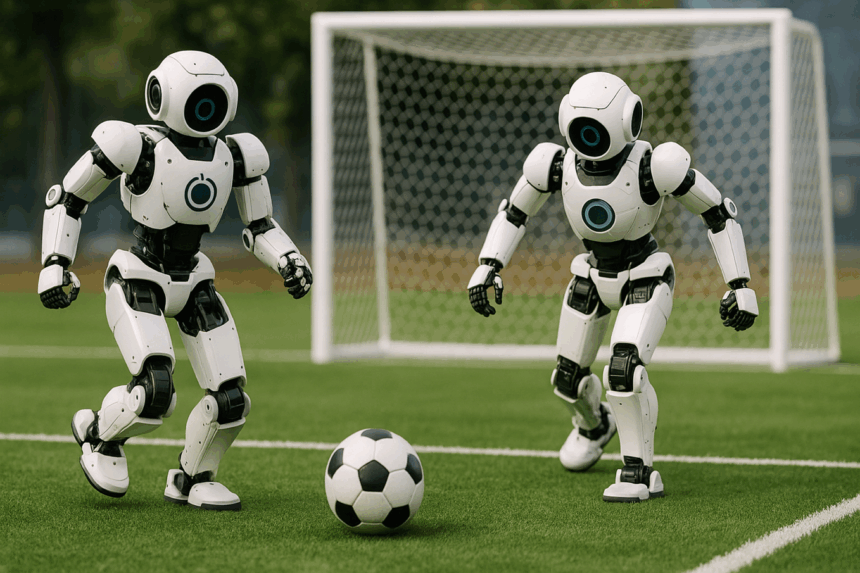It started with a foot race. Now, humanoid robots have taken their athletic abilities from running races to playing football in Beijing. In a recent event, fully autonomous AI-powered robots competed in 3-on-3 football (soccer) matches. This competition is a step towards China’s ambitious plans to develop humanoid robots that can operate independently in real-world environments.
What’s Happening & Why This Matters
On a Saturday night in Beijing, four teams of humanoid robots played fully autonomous 3-on-3 football matches. Powered entirely by advanced artificial intelligence, the robots navigated the field, tracked the ball, and competed without any human control or intervention. This event serves as a preview for the upcoming World Humanoid Robot Games, planned to take place in Beijing.
The robots were equipped with sophisticated visual sensors that helped them locate the ball and move across the pitch with impressive agility. They were also built to recover independently after falling. However, realism added to the spectacle when several robots required assistance and had to be carried off the field by staff. This mirrored the human side of sports injuries.
This football match is part of China’s intensified efforts to advance AI-powered humanoid robotics. Sports competitions, including marathons, boxing, and football, serve as real-world testing grounds for refining robot algorithms and enhancing hardware-software integration.
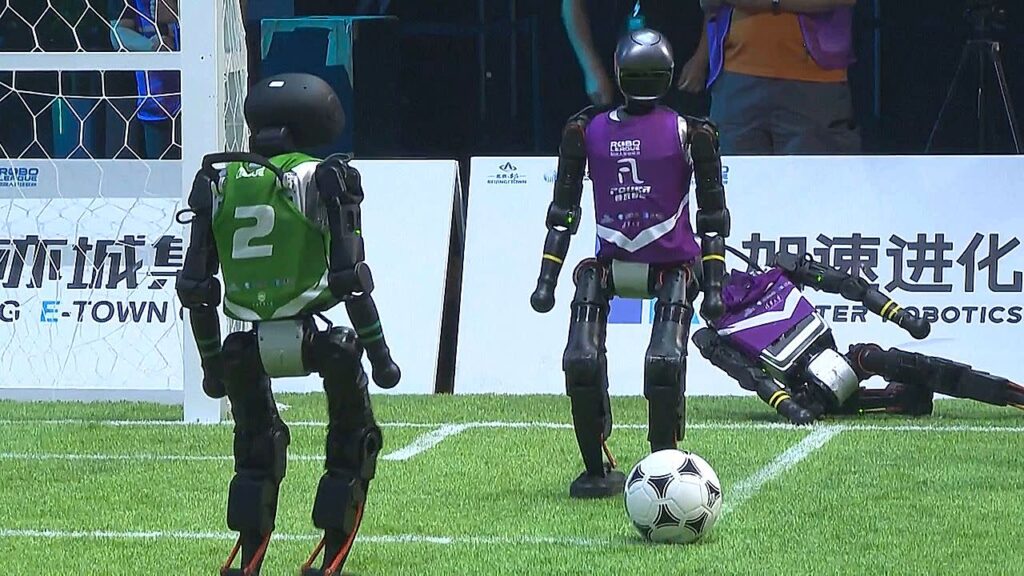
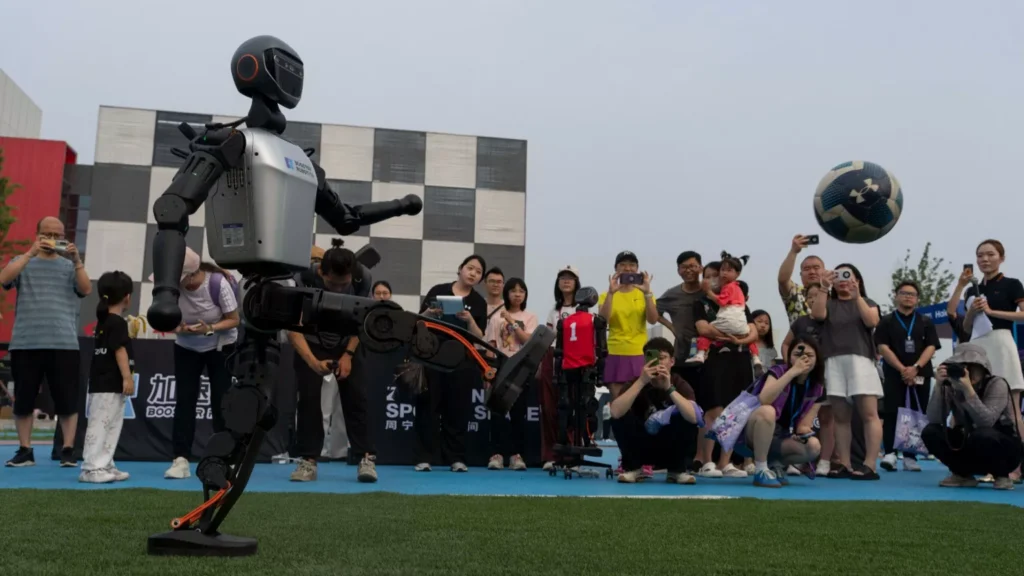
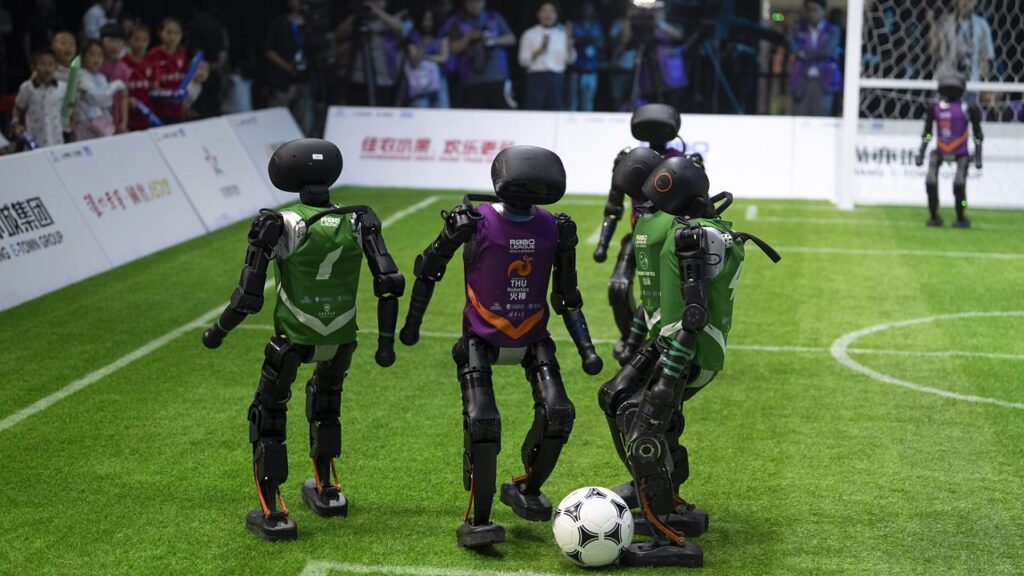
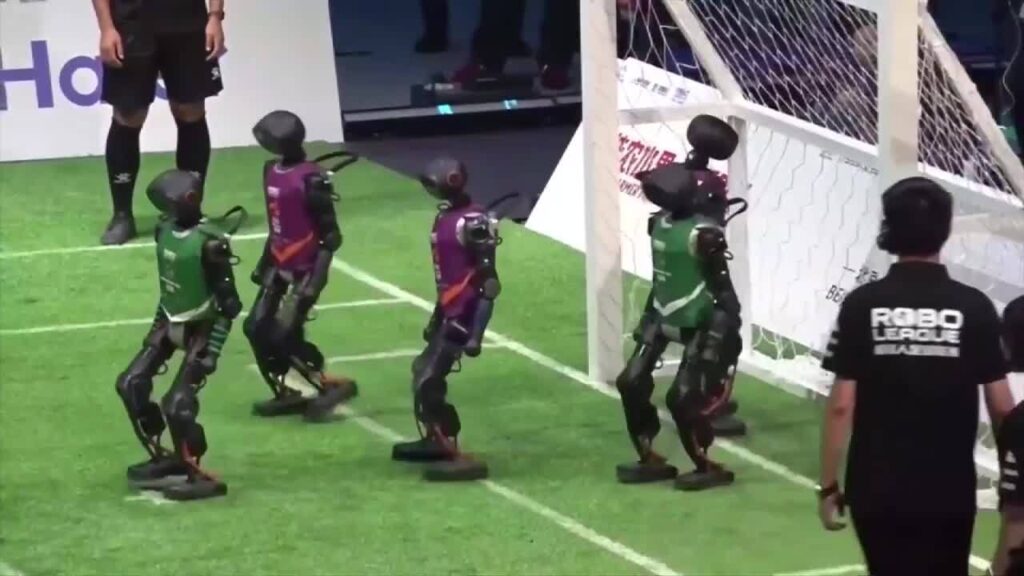

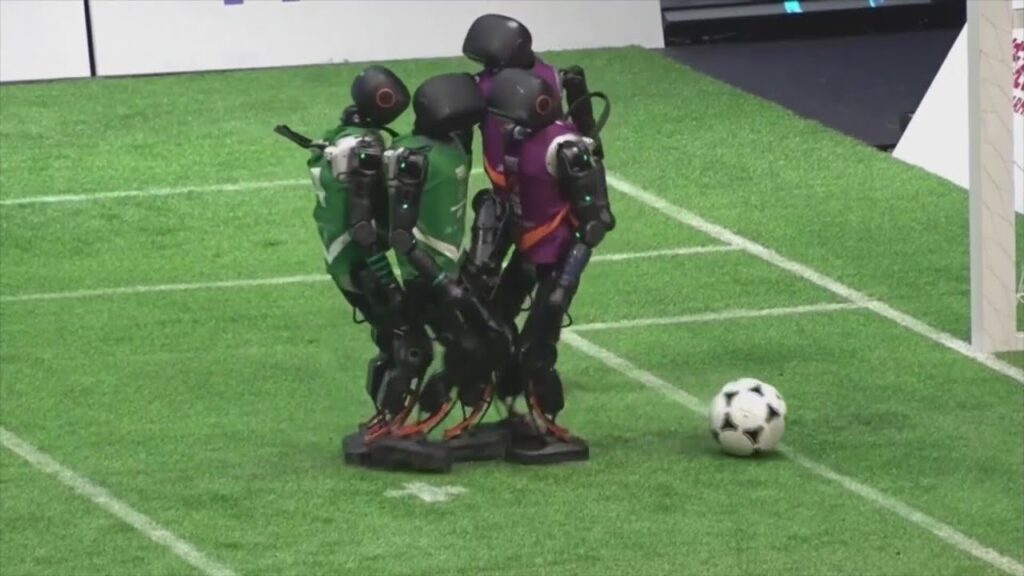
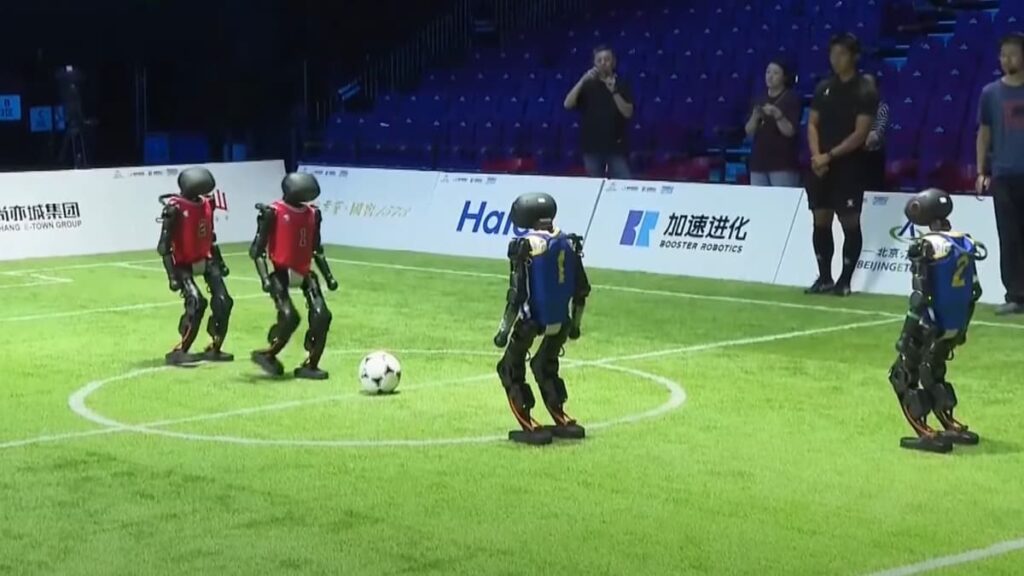
Cheng Hao, founder and CEO of Booster Robotics, which supplied the robot players, explained that these competitions accelerate the development of robots. They help refine decision-making algorithms and physical capabilities in dynamic, unpredictable settings.
Safety remains a top priority. Cheng indicated that plans may include robots playing football alongside humans, which would require strict safety standards. He said, “In the future, we may arrange for robots to play football with humans. That means we must ensure the robots are completely safe.”
China’s push to showcase humanoid robots in sports aligns with its grander AI ambitions. Utilizing athletic events as a proving ground presents both technical challenges and opportunities for public engagement. The sight of robots competing on the field draws fans more to the AI sophistication (and spectacle) than athletic skill, a real shift in sports tech advances.
TF Summary: What’s Next
China’s humanoid robots scoring goals in autonomous football matches represent a new frontier in AI robotics. These competitions help improve robot autonomy and physical performance in complex environments. With safety as a foundation, future events may see robots and humans working together in the field.
As China leads these developments, the global robotics community watches closely. The lessons learned in sports can be applied to other areas: manufacturing, healthcare, and service industries. The next phase will focus on refining AI strategies and ensuring robots safely coexist with people.
— Text-to-Speech (TTS) provided by gspeech


